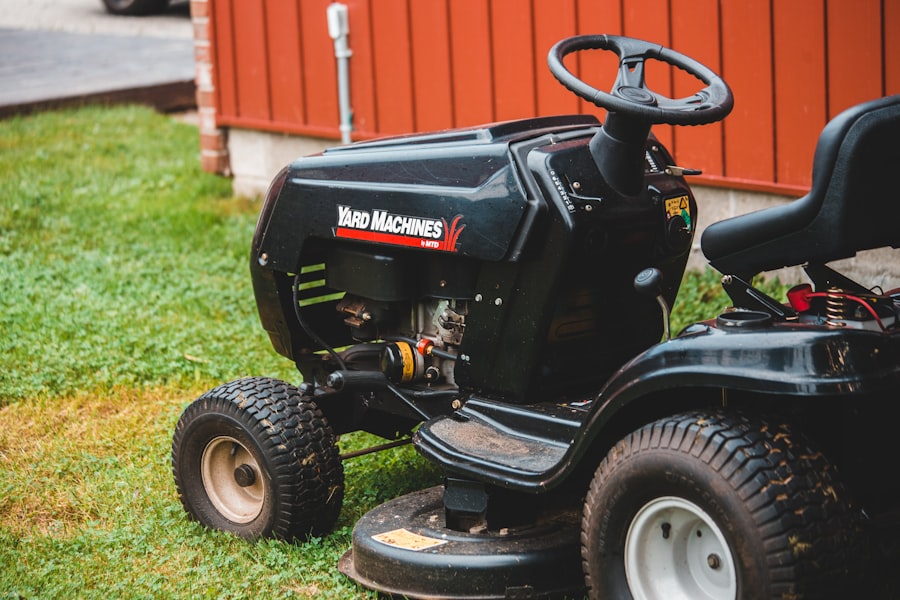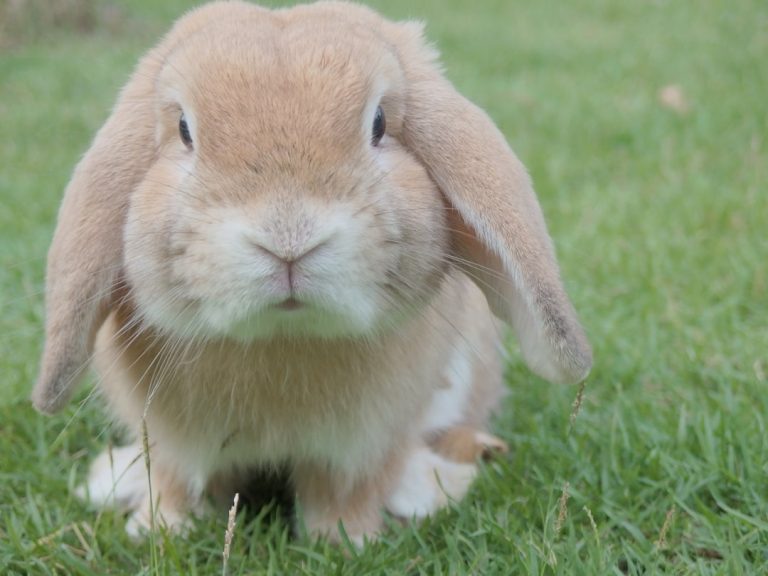
Safety protocols are essential in lawn care and maintenance to prevent accidents and protect workers and property. Personal protective equipment (PPE) such as gloves, goggles, and ear protection is crucial for preventing injuries from debris, chemicals, and noise. Proper equipment maintenance and worker training are necessary to avoid accidents caused by malfunctions or misuse.
Proper handling and storage of chemicals and fertilizers are vital safety measures. Following manufacturer instructions, secure storage, and clear labeling help prevent accidental ingestion or misuse. Identifying and addressing potential hazards in the work area, including uneven terrain, overhead power lines, and underground utilities, is crucial for reducing accident risks.
Implementing and adhering to safety protocols is fundamental for ensuring the well-being of all individuals involved in lawn care and maintenance activities. These measures help create a safer working environment and minimize the potential for accidents and injuries in the field.
Key Takeaways
- Safety protocols are crucial for preventing accidents and injuries during lawn care activities.
- Regular equipment maintenance and inspection can help ensure safe and efficient operation.
- Proper techniques for lawn care, such as mowing and watering, can promote healthy and vibrant grass.
- Understanding different types of plants and trees is essential for providing the right care and maintenance.
- Effective weed control methods can help maintain a clean and attractive lawn.
Equipment Maintenance and Inspection
Regular Maintenance and Inspection
This can help identify any patterns of wear or issues that need to be addressed. In addition to regular maintenance, equipment should be inspected before each use to ensure that it is in good working condition. This includes checking for loose or damaged parts, leaks, and proper functioning of safety features.
Proper Storage of Equipment
Furthermore, it is important to properly store equipment when not in use to protect it from the elements and prevent theft or vandalism. This may involve storing equipment in a secure location, covering it with a tarp, or using locks and security measures. Proper storage can also prevent damage from moisture, sunlight, and temperature fluctuations.
Benefits of Proper Maintenance and Inspection
Overall, proper maintenance and inspection of equipment are essential for ensuring its safe and effective operation. Proper maintenance and inspection of equipment are crucial for ensuring its safe and effective operation. Regular maintenance can prevent breakdowns and prolong the lifespan of equipment, ultimately saving time and money.
Proper Techniques for Lawn Care

Proper techniques for lawn care are essential for maintaining a healthy and attractive lawn. One important technique is mowing at the correct height to promote healthy grass growth. Mowing too short can stress the grass and make it more susceptible to disease and pests, while mowing too tall can create an ideal environment for weeds to thrive.
It is also important to mow with sharp blades to ensure a clean cut that promotes healthy regrowth. Another important technique is proper watering to ensure that the lawn receives enough moisture without being overwatered. This may involve watering deeply but infrequently to encourage deep root growth and drought tolerance.
Additionally, it is important to water early in the morning to reduce evaporation and minimize the risk of disease. Furthermore, proper fertilization is essential for providing the lawn with essential nutrients for healthy growth. It is important to follow a fertilization schedule based on the specific needs of the lawn and to apply the correct type and amount of fertilizer.
Overall, proper techniques for lawn care are essential for maintaining a healthy and attractive lawn. Proper techniques for lawn care are crucial for maintaining a healthy and attractive lawn. Mowing at the correct height is an important technique to promote healthy grass growth.
Mowing too short can stress the grass and make it more susceptible to disease and pests, while mowing too tall can create an ideal environment for weeds to thrive. It is also important to mow with sharp blades to ensure a clean cut that promotes healthy regrowth. Proper watering is another important technique to ensure that the lawn receives enough moisture without being overwatered.
This may involve watering deeply but infrequently to encourage deep root growth and drought tolerance. Additionally, it is important to water early in the morning to reduce evaporation and minimize the risk of disease. Proper fertilization is also essential for providing the lawn with essential nutrients for healthy growth.
Following a fertilization schedule based on the specific needs of the lawn and applying the correct type and amount of fertilizer is crucial for maintaining a healthy lawn.
Understanding Different Types of Plants and Trees
| Plant/Trees Type | Characteristics | Benefits |
|---|---|---|
| Flowering Plants | Produce colorful flowers | Attract pollinators like bees and butterflies |
| Evergreen Trees | Retain leaves year-round | Provide year-round shade and privacy |
| Fruit-bearing Plants | Produce edible fruits | Provide fresh fruits for consumption |
| Deciduous Trees | Shed leaves in fall | Allow more sunlight in winter |
Understanding different types of plants and trees is essential for effective lawn care and maintenance. It is important to be knowledgeable about the specific needs of different plants and trees, including their water, sunlight, soil, and nutrient requirements. This knowledge can help ensure that each plant or tree receives the proper care it needs to thrive.
Additionally, understanding different types of plants and trees can help identify potential issues such as diseases, pests, or nutrient deficiencies. By being able to recognize these issues early on, appropriate measures can be taken to address them before they cause significant damage. Furthermore, understanding different types of plants and trees can help with landscape design and planning.
By knowing the characteristics of different plants and trees, it is possible to create a well-balanced and visually appealing landscape that complements the property. Overall, understanding different types of plants and trees is essential for effective lawn care and maintenance. Understanding different types of plants and trees is crucial for effective lawn care and maintenance.
Being knowledgeable about the specific needs of different plants and trees, including their water, sunlight, soil, and nutrient requirements, can help ensure that each plant or tree receives the proper care it needs to thrive. Additionally, understanding different types of plants and trees can help identify potential issues such as diseases, pests, or nutrient deficiencies early on so that appropriate measures can be taken to address them before they cause significant damage. Furthermore, understanding different types of plants and trees can help with landscape design and planning by creating a well-balanced and visually appealing landscape that complements the property.
Effective Weed Control Methods
Effective weed control methods are essential for maintaining a healthy lawn and garden. One effective method is regular weeding by hand or using tools such as hoes or weed pullers. This can help prevent weeds from establishing themselves and spreading throughout the lawn or garden.
Another effective method is mulching with organic materials such as wood chips or straw. Mulch can help suppress weed growth by blocking sunlight from reaching weed seeds and preventing them from germinating. Additionally, using pre-emergent herbicides can be an effective weed control method by preventing weed seeds from germinating in the first place.
It is important to apply pre-emergent herbicides at the right time according to the specific weed species being targeted. Furthermore, using post-emergent herbicides can be effective for controlling existing weeds. It is important to carefully follow the manufacturer’s instructions when using herbicides to ensure their safe and effective application.
Overall, effective weed control methods are essential for maintaining a healthy lawn and garden. Effective weed control methods are crucial for maintaining a healthy lawn and garden. Regular weeding by hand or using tools such as hoes or weed pullers can help prevent weeds from establishing themselves and spreading throughout the lawn or garden.
Mulching with organic materials such as wood chips or straw is another effective method for suppressing weed growth by blocking sunlight from reaching weed seeds and preventing them from germinating. Using pre-emergent herbicides can also be an effective weed control method by preventing weed seeds from germinating in the first place when applied at the right time according to the specific weed species being targeted. Using post-emergent herbicides can be effective for controlling existing weeds; however, it is important to carefully follow the manufacturer’s instructions when using herbicides to ensure their safe and effective application.
Dealing with Pests and Diseases

Dealing with pests and diseases is an important aspect of lawn care and maintenance. It is essential to be able to identify common pests such as grubs, aphids, or caterpillars as well as common diseases such as brown patch or powdery mildew. By being able to recognize these issues early on, appropriate measures can be taken to address them before they cause significant damage.
One effective method for dealing with pests is integrated pest management (IPM), which involves using a combination of cultural, biological, mechanical, and chemical control methods based on the specific pest species being targeted. Additionally, proper cultural practices such as proper watering, fertilization, mowing, and aeration can help prevent pest infestations by promoting a healthy lawn that is more resistant to pests and diseases. Furthermore, using disease-resistant plant varieties can help prevent common diseases from affecting plants in the first place.
Overall, dealing with pests and diseases is an important aspect of lawn care and maintenance. Dealing with pests and diseases is an important aspect of lawn care and maintenance. Being able to identify common pests such as grubs, aphids, or caterpillars as well as common diseases such as brown patch or powdery mildew early on allows appropriate measures to be taken before they cause significant damage.
Integrated pest management (IPM) involving a combination of cultural, biological, mechanical, and chemical control methods based on the specific pest species being targeted is an effective method for dealing with pests. Proper cultural practices such as proper watering, fertilization, mowing, and aeration can help prevent pest infestations by promoting a healthy lawn that is more resistant to pests and diseases. Using disease-resistant plant varieties can also help prevent common diseases from affecting plants in the first place.
Seasonal Maintenance Tasks
Seasonal maintenance tasks are essential for keeping lawns and gardens healthy throughout the year. In spring, tasks may include dethatching lawns, overseeding bare patches, applying pre-emergent herbicides, pruning shrubs, and planting annuals. In summer, tasks may include regular watering during dry periods, mowing at the correct height, monitoring for pests and diseases, deadheading flowers, applying post-emergent herbicides if necessary, and fertilizing as needed.
In fall, tasks may include raking leaves, aerating lawns, overseeding cool-season grasses, applying fall fertilizer, pruning perennials, planting bulbs for spring blooms, cleaning up garden beds, and preparing plants for winter. In winter, tasks may include protecting tender plants from frost or freezing temperatures with mulch or covers, clearing snow from walkways and driveways, sharpening tools in preparation for spring maintenance tasks. Overall, seasonal maintenance tasks are essential for keeping lawns and gardens healthy throughout the year.
Seasonal maintenance tasks are crucial for keeping lawns and gardens healthy throughout the year. In spring tasks may include dethatching lawns overseeding bare patches applying pre-emergent herbicides pruning shrubs planting annuals. In summer tasks may include regular watering during dry periods mowing at the correct height monitoring for pests diseases deadheading flowers applying post-emergent herbicides if necessary fertilizing as needed.
In fall tasks may include raking leaves aerating lawns overseeding cool-season grasses applying fall fertilizer pruning perennials planting bulbs for spring blooms cleaning up garden beds preparing plants for winter. In winter tasks may include protecting tender plants from frost freezing temperatures with mulch covers clearing snow from walkways driveways sharpening tools in preparation for spring maintenance tasks. In conclusion implementing safety protocols maintaining equipment properly using proper techniques understanding different types of plants trees effective weed control methods dealing with pests diseases performing seasonal maintenance tasks are all crucial aspects of successful lawn care maintenance These practices not only contribute to a healthy attractive landscape but also ensure the safety well-being everyone involved in caring maintaining lawns gardens
If you’re exploring career options that involve working outdoors and maintaining beautiful landscapes, you might also be interested in learning about other professions that require a nurturing touch and attention to detail. For instance, the role of Kindergarten and Elementary School Teachers is crucial as they help shape young minds in a structured environment, much like grounds maintenance workers cultivate and manage outdoor spaces. Both professions play essential roles in creating and maintaining environments that are conducive to growth and development.
FAQs
What do grounds maintenance workers do?
Grounds maintenance workers are responsible for maintaining the outdoor areas of properties, such as parks, gardens, and commercial landscapes. They perform tasks such as mowing lawns, trimming hedges, planting flowers, and removing debris.
What skills are required to be a grounds maintenance worker?
Grounds maintenance workers should have good physical stamina, as the job often involves lifting heavy objects and working in various weather conditions. They should also have knowledge of landscaping techniques and the ability to operate and maintain landscaping equipment.
What are the typical work environments for grounds maintenance workers?
Grounds maintenance workers can be employed by a variety of organizations, including landscaping companies, parks and recreation departments, and schools. They may work in outdoor settings such as parks, golf courses, or private residences.
What are the potential hazards of being a grounds maintenance worker?
Grounds maintenance workers may be exposed to hazards such as sharp tools, heavy machinery, and pesticides. They also face the risk of injury from repetitive tasks and working in extreme weather conditions. It is important for them to follow safety protocols and use protective equipment.
What is the job outlook for grounds maintenance workers?
According to the Bureau of Labor Statistics, the employment of grounds maintenance workers is projected to grow 9 percent from 2020 to 2030, which is about as fast as the average for all occupations. This growth is expected to be driven by the need for landscaping and maintenance services at residential and commercial properties.



